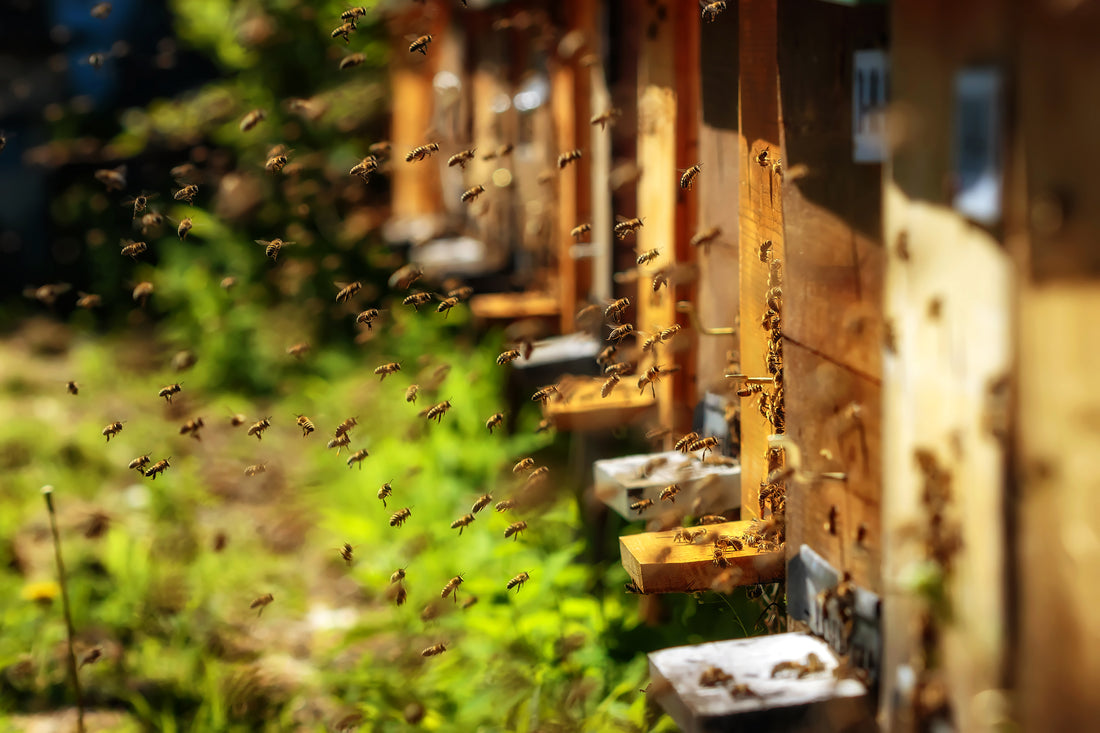Introduction
Honey, the golden elixir cherished by humankind for millennia, is not only a delectable natural sweetener but also a remarkable feat of nature's ingenuity. It is a product of the remarkable partnership between honeybees and flowering plants. In this blog post, we'll delve into the fascinating process of how honey is made, from the collection of nectar to its transformation into the delectable substance we know and love.
Step 1: Gathering Nectar
The journey of honey begins with the bees venturing out from their hive in search of nectar. Nectar is a sugary liquid secreted by the glands in the flowers of various plants. Honeybees are drawn to the vibrant colors and enticing fragrances of the blossoms. As the bees hover over the flowers, they use their long, straw-like proboscis to suck up the nectar from the base of the flower.
Step 2: Transporting Nectar to the Hive
Once the bees have gathered enough nectar in their honey stomachs, they return to the hive. These stomachs are separate from their digestive stomachs, acting as a temporary storage vessel for the collected nectar. On their journey back to the hive, the bees pass pollen between the flowers, facilitating cross-pollination, a crucial process for the reproduction of many plant species.
Step 3: Honeybee Alchemy - Enzymatic Transformation
Upon arrival at the hive, the nectar-laden bees regurgitate the collected nectar into the mouths of other worker bees. This process of regurgitation continues among several bees, allowing the nectar to mix with enzymes. These enzymes, such as invertase, amylase, and glucose oxidase, play a crucial role in breaking down the complex sugars in the nectar into simpler sugars, primarily glucose and fructose. The enzymatic process is essential as it reduces the water content and acidity level, ensuring that the nectar doesn't ferment.
Step 4: Reducing Water Content
The bees now work tirelessly to reduce the water content in the nectar. They achieve this by fanning their wings over the exposed nectar, causing water evaporation and thickening of the liquid. This process continues until the water content decreases to approximately 17-20%.
Step 5: Capping the Honeycomb
When the nectar reaches the desired consistency, the bees place it into honeycomb cells. These hexagonal cells are made of beeswax, which is secreted from special glands on the bee's abdomen. Once the honeycombs are filled, the bees cap each cell with a thin layer of wax to preserve the honey.
Step 6: Maturing and Harvesting
The capped honeycomb is left to mature for a few days to a few weeks, depending on environmental conditions. During this period, the enzymatic activity continues, transforming the nectar into honey completely. The matured honey develops its distinct flavor, aroma, and nutritional properties based on the types of flowers the bees visited during their foraging.
Finally, when the beekeepers determine that the honey is ready for harvesting, they carefully remove the honeycomb frames from the hive. The honeycombs are then uncapped, and the honey is extracted using various methods like centrifugation or pressing. The extracted honey is strained to remove any impurities and then stored in jars or bottles, ready to be enjoyed by consumers around the world.
Conclusion
The process of honey-making is an intricate and awe-inspiring collaboration between nature and honeybees. From the collection of nectar from flowers to the enzymatic transformation and evaporation, each step in the process contributes to the creation of the beloved golden elixir that has been an essential part of human culture for centuries. Next time you drizzle honey over your pancakes or sweeten your tea, take a moment to appreciate the incredible journey this luscious liquid has undertaken to reach your table.
